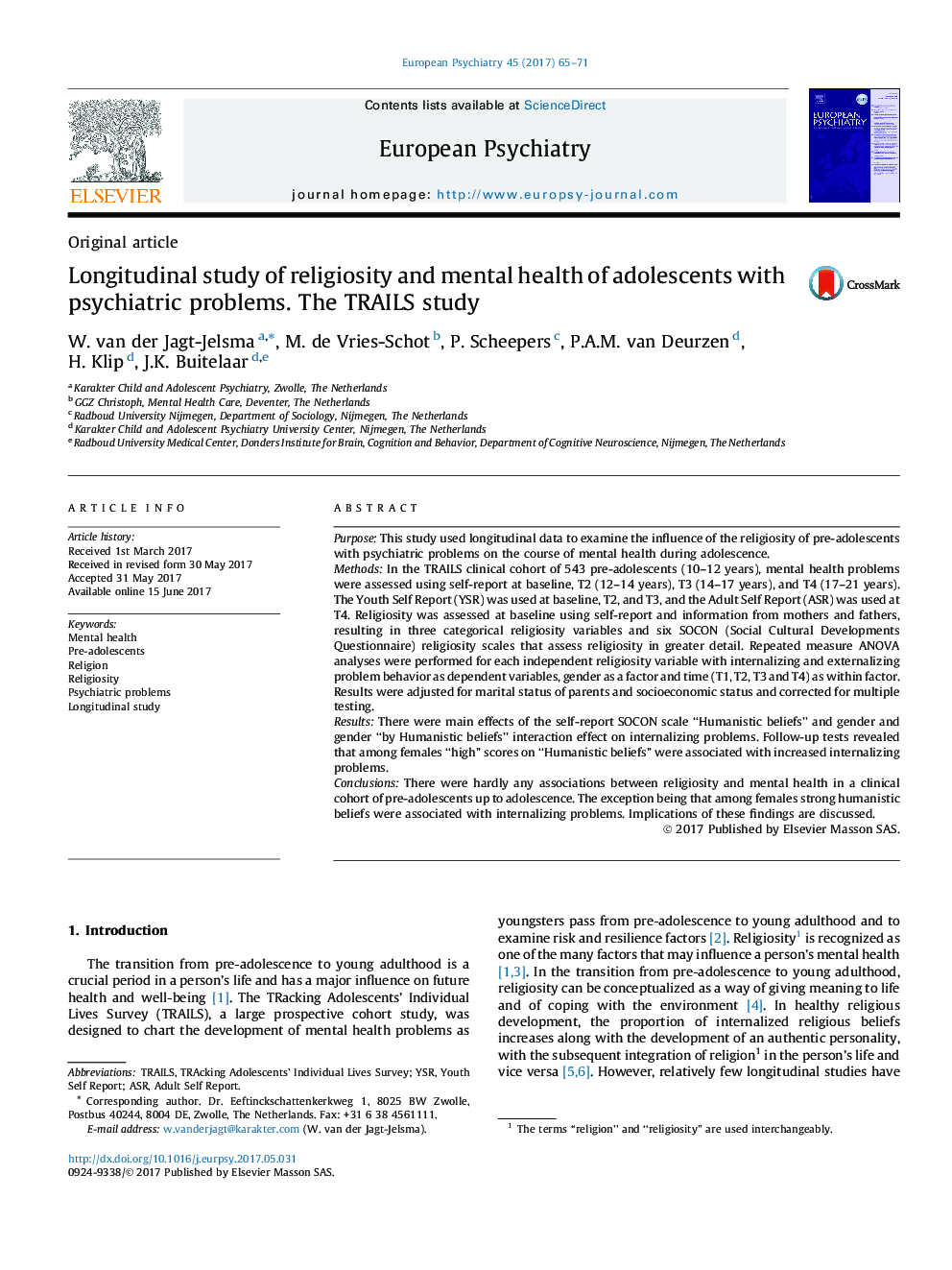| Article ID | Journal | Published Year | Pages | File Type |
|---|---|---|---|---|
| 5721359 | European Psychiatry | 2017 | 7 Pages |
PurposeThis study used longitudinal data to examine the influence of the religiosity of pre-adolescents with psychiatric problems on the course of mental health during adolescence.MethodsIn the TRAILS clinical cohort of 543 pre-adolescents (10-12 years), mental health problems were assessed using self-report at baseline, T2 (12-14 years), T3 (14-17 years), and T4 (17-21 years). The Youth Self Report (YSR) was used at baseline, T2, and T3, and the Adult Self Report (ASR) was used at T4. Religiosity was assessed at baseline using self-report and information from mothers and fathers, resulting in three categorical religiosity variables and six SOCON (Social Cultural Developments Questionnaire) religiosity scales that assess religiosity in greater detail. Repeated measure ANOVA analyses were performed for each independent religiosity variable with internalizing and externalizing problem behavior as dependent variables, gender as a factor and time (T1, T2, T3 and T4) as within factor. Results were adjusted for marital status of parents and socioeconomic status and corrected for multiple testing.ResultsThere were main effects of the self-report SOCON scale “Humanistic beliefs” and gender and gender “by Humanistic beliefs” interaction effect on internalizing problems. Follow-up tests revealed that among females “high” scores on “Humanistic beliefs” were associated with increased internalizing problems.ConclusionsThere were hardly any associations between religiosity and mental health in a clinical cohort of pre-adolescents up to adolescence. The exception being that among females strong humanistic beliefs were associated with internalizing problems. Implications of these findings are discussed.
